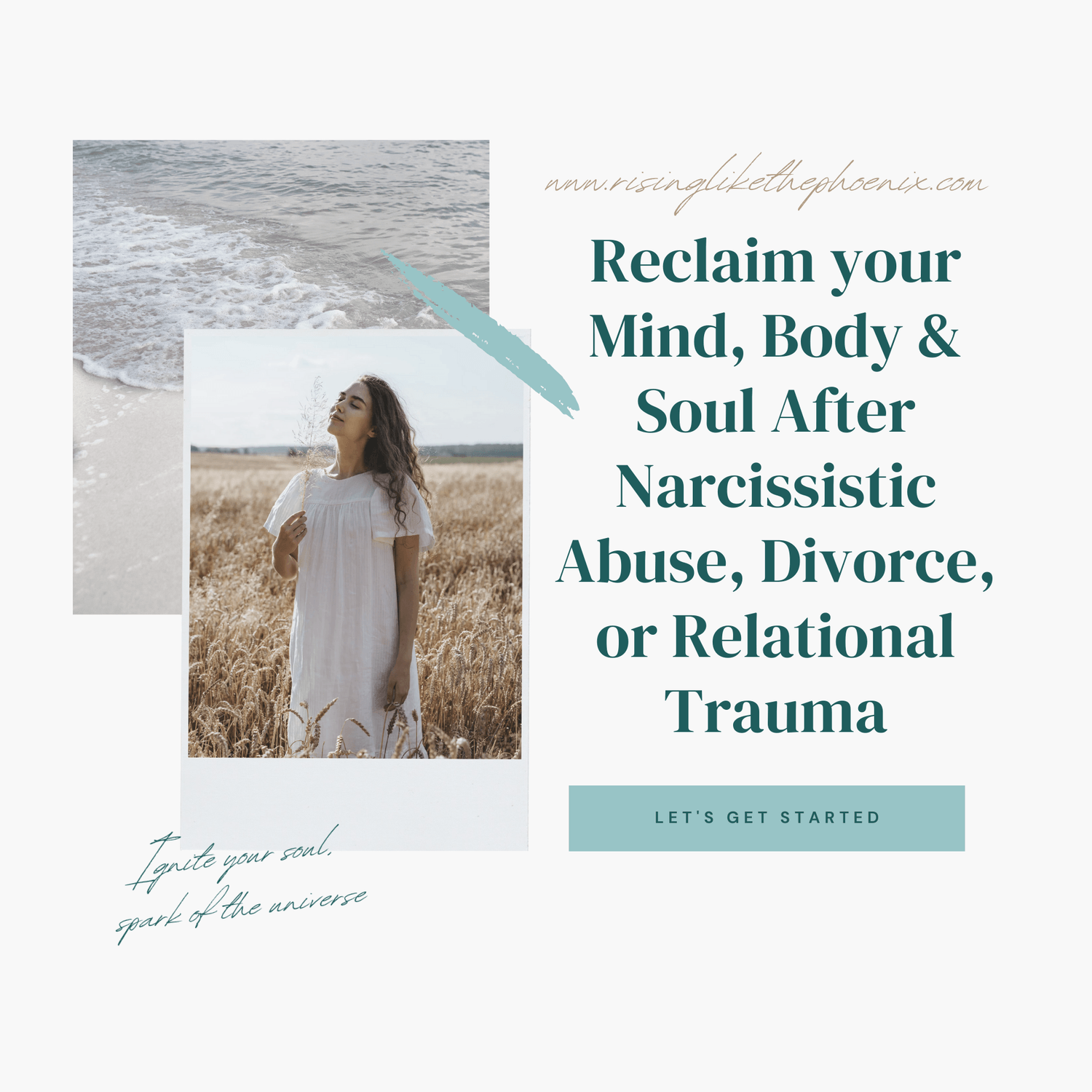How to Set Healthy Boundaries to Protect Your Energy During Recovery From Narcissistic Abuse
Reclaiming Power on the Healing Journey
One of the most powerful steps in the healing journey after narcissistic abuse is learning how to set healthy boundaries. For many survivors, especially deeply empathic women, this can feel unfamiliar, even frightening. But boundaries are not walls. They are doors with locks. They are sacred gates that you control, keys in your hand, energy protected, and self-worth reclaimed.
If you’ve experienced relationship trauma, gaslighting effects, or emotional manipulation, chances are you were conditioned to believe your needs were too much or your “no” didn’t matter. This blog is your permission slip to rewrite that story. Let’s walk together through the steps of understanding, setting, and maintaining boundaries with love, strength, and grace.
What Are Healthy Boundaries?
Boundaries are the limits you set around your time, energy, and emotional well-being. They define what’s okay and what’s not in your relationships with others, and with yourself.
In narcissistic abuse recovery, establishing boundaries is essential to healing. Narcissists often violate emotional, mental, and even physical boundaries, leaving survivors feeling powerless, confused, and overextended.
Healthy boundaries might sound like:
“I’m not available for this conversation right now.”
“I need space to recharge. Let’s talk later.”
“I don’t feel safe continuing this relationship.”
“No.”
Setting these lines isn't selfish, it’s self-care. Boundaries are a radical act of emotional healing and self-respect.
Why Survivors Struggle with Boundaries
Women coming out of toxic relationships often carry deep wounding around people-pleasing, codependency, and fear of abandonment. If you were gaslit into thinking your emotions were “too sensitive” or your needs were “too demanding,” then advocating for yourself may feel unnatural at first.
But remember: narcissistic abuse thrives in chaos and blurred lines. Boundaries are clarity. They are how we heal.
Common fears around boundary setting include:
Being seen as rude or cold
Losing relationships
Guilt or shame for prioritizing your needs
Fear of retaliation.
These fears are valid, and they’re also part of the trauma response. With practice, your nervous system will begin to rewire. What once felt terrifying will start to feel empowering.

How to Start Setting Boundaries
1. Reconnect with Your Needs.
Before setting boundaries, you must know what you’re protecting. Take time to reflect on what drains you and what nourishes you.
Try this: Keep an “energy audit” journal for one week. Record what situations, people, or tasks leave you feeling depleted, and which ones make you feel safe, seen, and whole.
2. Practice Saying No
Start small. Say no to the extra project at work. Decline the lunch you don’t want to attend. Turn off your phone for an evening. Notice how it feels in your body. Your “no” is holy.
3. Communicate Clearly and Kindly.
You don’t need to over-explain or justify your boundaries. Clear, direct communication is kind.
Examples:
“I can’t talk right now, but I’ll check in tomorrow.”
“I’m working on prioritizing my mental health, so I’m limiting contact for now.”
“That doesn’t work for me.”
4. Expect Resistance.
People who benefited from your lack of boundaries may not applaud your growth. They may guilt you, test you, or lash out. This is part of the process. Hold your line. You are not responsible for their reaction, only your truth.
Protecting Your Energy: Daily Practices.
Establishing boundaries isn’t a one-time act; it’s a daily practice. Think of it like brushing your teeth or locking your front door. Here's how to protect your peace, body, and spirit on an ongoing basis.
✧ Create a Morning Energy Ritual.
Before the world gets loud, tune in. Meditate, journal, stretch, or simply place a hand over your heart and ask, “What do I need today?”
✧ Visualize Your Emotional Shield
Use visualization to strengthen your energetic boundaries. Imagine a golden light or gentle forcefield around you. Nothing gets in without your permission.
✧ Limit Toxic Inputs
Curate your digital and social media space. Mute accounts that feel draining. Unfollow comparison triggers. Protect your time like the sacred resource it is.
✧ Cleanse After Exposure
If you’ve had to deal with a draining interaction, take a grounding shower, move your body, or place your feet on the earth. Literally wash it off. Breathe deeply and return to yourself.

Rewriting the Story: You Deserve to Feel Safe
The most powerful belief you can reclaim in narcissistic abuse recovery is this:
You are allowed to take up space.
You are worthy of peace.
You do not owe access to everyone.
Whether you’re mid-divorce, navigating no-contact, or just learning to say "no" without apology, this part of your healing journey is sacred. Every boundary you set is a step back to your authentic self. You’re not pushing people away. You’re honoring the energy it took to survive, and creating space to finally thrive.
What If They Don't Respect My Boundaries?
This is an important question, and one that many survivors of emotional abuse worry about.
Here’s what to remember: Boundaries are about what you will do, not about controlling others. If someone continues to overstep your clearly communicated limits, you take action:
Reduce or eliminate contact.
Enforce consequences: “If you continue to yell, I will leave the room.”
Exit the relationship entirely, if needed.
You are not obligated to stay in environments that disrespect you.
When Boundaries Create Freedom
While boundaries might feel restrictive at first, they ultimately offer deep freedom. Freedom from people-pleasing. Freedom from exhaustion. Freedom to be your whole self without guilt.
This is your life, your energy, your healing. And you get to decide who has access to your sacred space.
FAQ: Setting Boundaries and Protecting Your Energy
Yes. Family is not an excuse for disrespect. Your healing matters more than someone’s comfort with your growth.
Guilt is common, especially if you were conditioned to prioritize others. Let the guilt come, but don’t let it drive the car. It will pass.
No. A simple, clear statement is enough. Over-explaining often comes from old survival patterns. Trust yourself.
You’ll feel calmer. More in control. Less anxious or resentful. And the people who truly care about you will respect your limits.
5 Steps to Reclaim Your Life
A practical guide to reclaiming your confidence, setting boundaries, and moving forward—without second-guessing yourself.

Hi, I’m Diane – and I’m so glad you’re here
Diane is the author of A Girlfriend’s Guide to the Other Side: Reclaim Your Mind, Body, and Soul After Narcissistic Abuse, Divorce, or Relational Trauma.
After surviving the wreckage of a controlling relationship that stripped her identity, she turned her pain into purpose. Through her book, course, and community, Diane now guides women on the journey of rebuilding self-worth, setting healthy boundaries, and reclaiming their lives.
Her mission is simple: to remind every woman that healing is possible, and that your future can be brighter than your past.
Categories
Rise Weekly Newsletter
Because healing isn’t just about surviving, it’s about rising. Rise Weekly delivers empowering insights, gentle reminders, and soulful tools to help you reclaim your strength, set powerful boundaries, and rebuild a life that feels like you. If you're ready to rise above trauma and step into your next chapter with clarity and courage - this is your space.
Created by © Suzanne Startari with systeme.io





